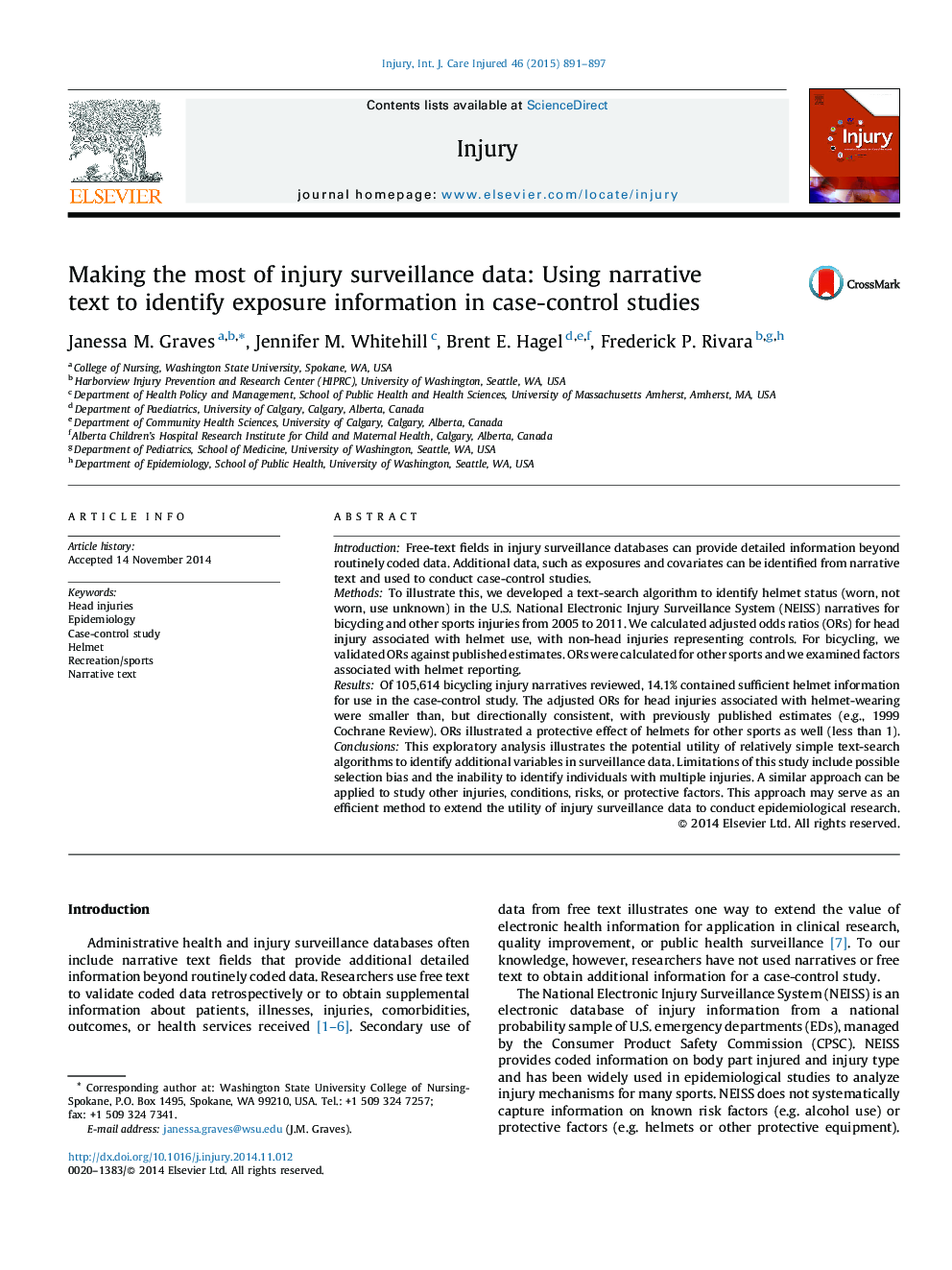| Article ID | Journal | Published Year | Pages | File Type |
|---|---|---|---|---|
| 3239334 | Injury | 2015 | 7 Pages |
IntroductionFree-text fields in injury surveillance databases can provide detailed information beyond routinely coded data. Additional data, such as exposures and covariates can be identified from narrative text and used to conduct case-control studies.MethodsTo illustrate this, we developed a text-search algorithm to identify helmet status (worn, not worn, use unknown) in the U.S. National Electronic Injury Surveillance System (NEISS) narratives for bicycling and other sports injuries from 2005 to 2011. We calculated adjusted odds ratios (ORs) for head injury associated with helmet use, with non-head injuries representing controls. For bicycling, we validated ORs against published estimates. ORs were calculated for other sports and we examined factors associated with helmet reporting.ResultsOf 105,614 bicycling injury narratives reviewed, 14.1% contained sufficient helmet information for use in the case-control study. The adjusted ORs for head injuries associated with helmet-wearing were smaller than, but directionally consistent, with previously published estimates (e.g., 1999 Cochrane Review). ORs illustrated a protective effect of helmets for other sports as well (less than 1).ConclusionsThis exploratory analysis illustrates the potential utility of relatively simple text-search algorithms to identify additional variables in surveillance data. Limitations of this study include possible selection bias and the inability to identify individuals with multiple injuries. A similar approach can be applied to study other injuries, conditions, risks, or protective factors. This approach may serve as an efficient method to extend the utility of injury surveillance data to conduct epidemiological research.
